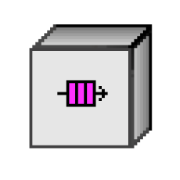-
Similar Content
-
- 0 replies
- 2,902 views
-
To OOP or not to OOP?? Please Help "Array of clusters or Classed data"
By Mahbod Morshedi,
- oop
- actor framwork
- (and 1 more)
- 5 replies
- 3,276 views
-
- 3 replies
- 4,364 views
-
- 5 replies
- 4,859 views
-
- 3 replies
- 3,877 views
-






Recommended Posts
Join the conversation
You can post now and register later. If you have an account, sign in now to post with your account.